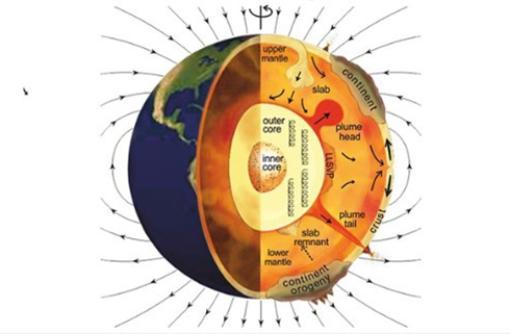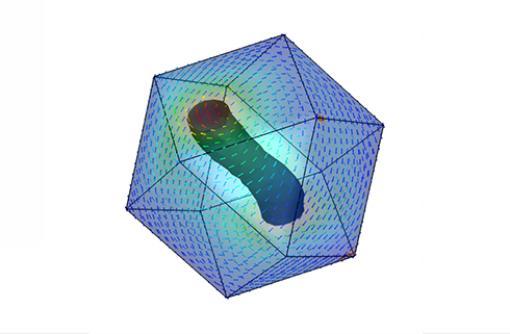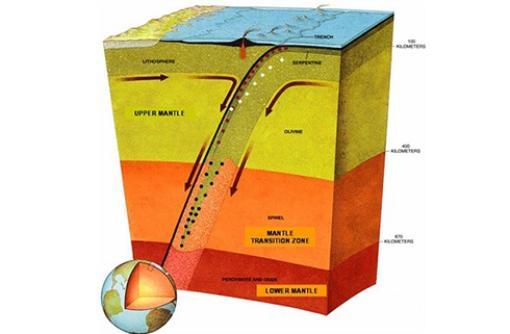Deep Earth
Processes happening deep within the Earth can have major impacts on the Earth's surface. From the generation of the geomagnetic field in the core, which protects us from solar storms, to the rheology of the mantle, the study of how it undergoes solid state flow, influencing plate tectonics and the heights of topography in the continents.
Research Highlights
We have a strong program of research into deep earth processes, ranging from characterization and modelling of the earth’s geodynamo, which produces the geomagnetic field and protects us from solar storms, to rheology and mineral changes in the mantle.
Some of our recent projects involving the Deep Earth theme:
The DEEP team
Geomagnetic studies measure the direction and intensity of the Earth’s past magnetic field spanning timescales from human history to billions of years. This provides novel information on core dynamics and forcing and address such major questions as the timing of inner core formation. Our studies involve laboratory technique development, field campaigns targeting key time periods in Earth’s history, and theoretical developments to better understand magnetism at the grain scale. - £1M Leverhulme grant to explore Earth’s deep interior

Contact: Andy Biggin
Magnetic Earth
All materials on Earth are magnetic, but some are more (or less) magnetic than others. The variation of the magnetic properties of natural material over space and through time can tell us about the dynamic history of our planet. A key aspect of this is understanding the magnetic recording mechanisms of the nanoscale particles that preserve information about Earth’s ancient magnetic field. Our most recent efforts are focused on the “Particles to Planets” project. This collaborative project with the University of Edinburgh will use micromagnetic modelling to reconstruct the magnetic signals in rocks that record large changes in Earth’s deep interior as the solid inner core begins to grow.
The picture is of a single vortex magnetization state, commonly found in natural magnetic particles.

Contact: Greig Paterson
Movements in the mantle
The mantle's movement is driven by gravity and buoyancy variations from place to place. Those buoyancy variations are governed by mineral changes as well as temperature. A project begun in 2022 will address novel explanations for those mineral changes, including for the first time the effects of dynamic pressure variations and stress. The project will involve grain-scale and mantle-scale numerical models for the causes and consequences of those effects, work mainly at Liverpool, together with seismological investigations at Cambridge and high-pressure experiments at Manchester. - £3.3M to investigate Earth’s mantle convection
